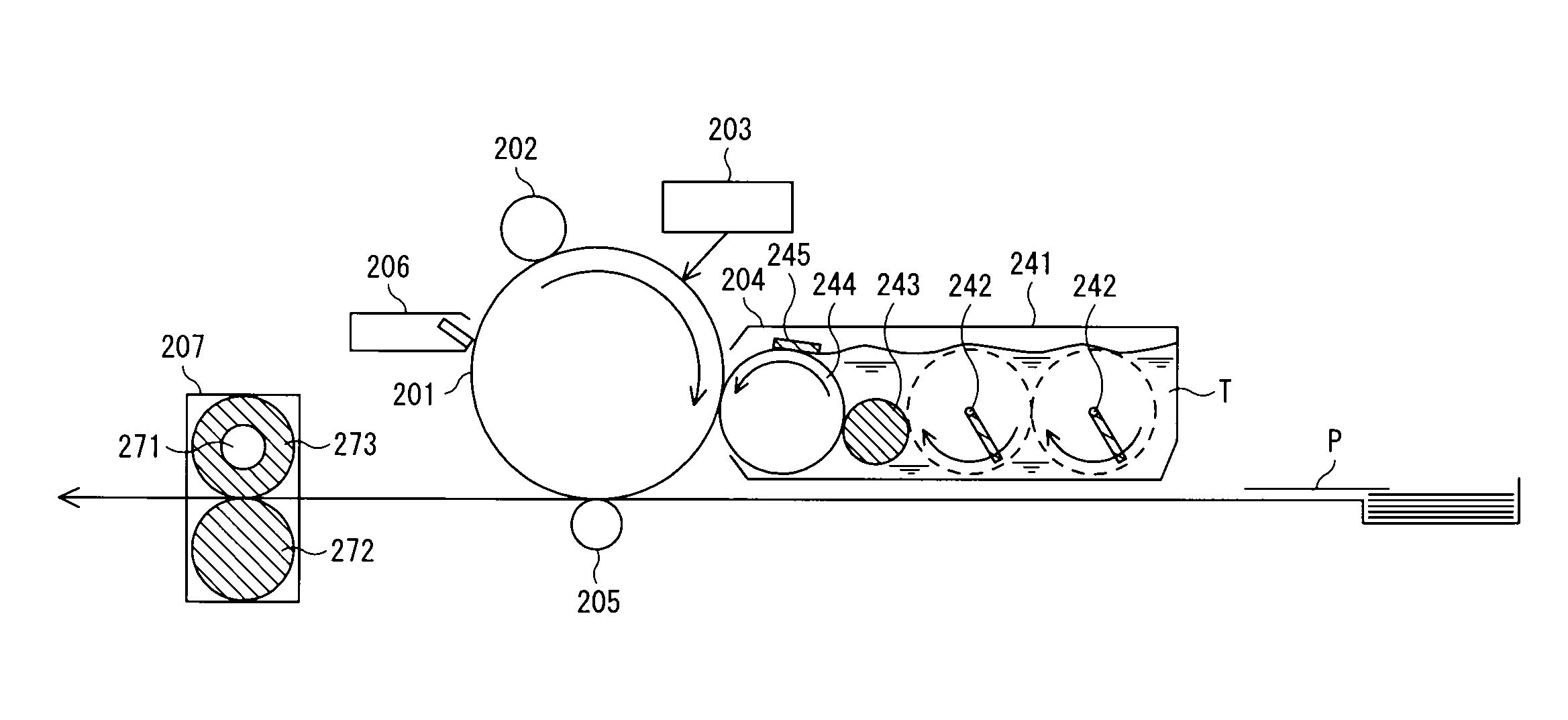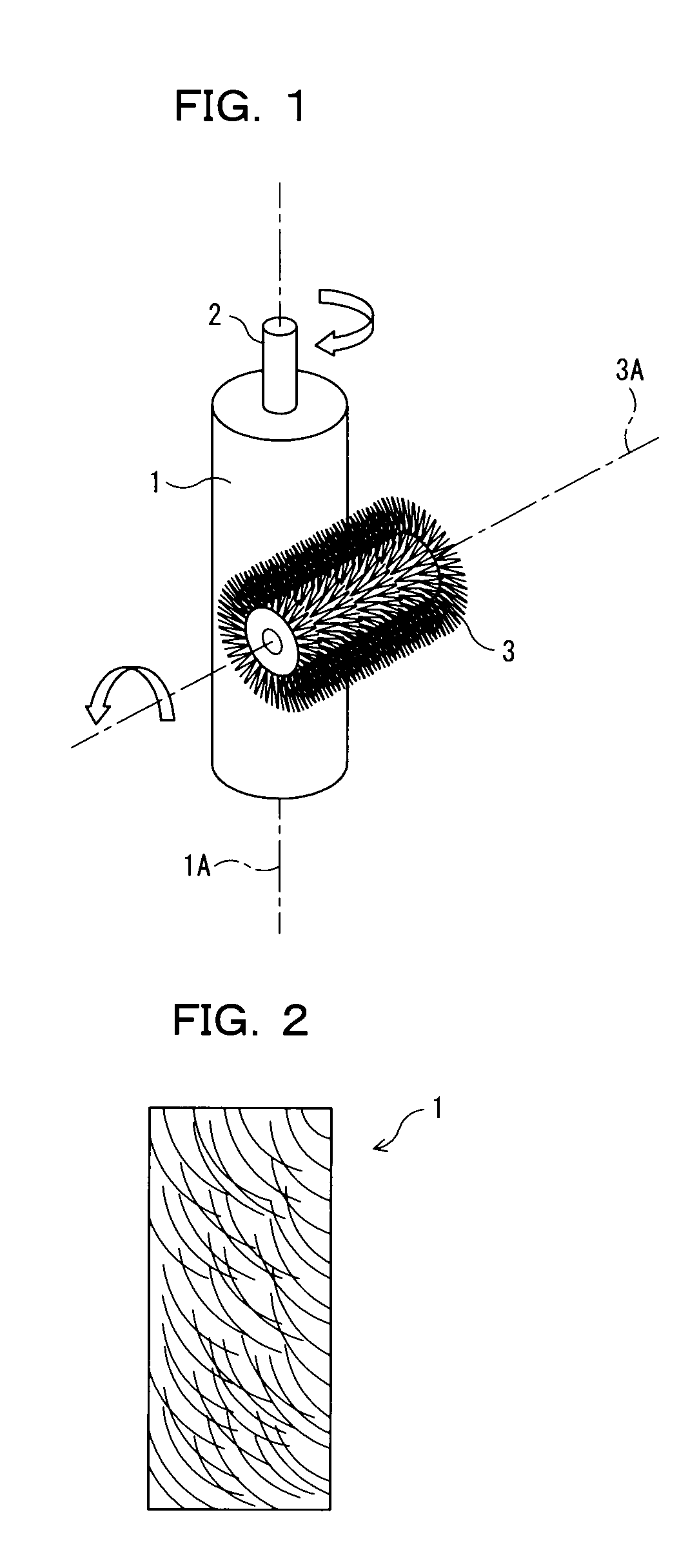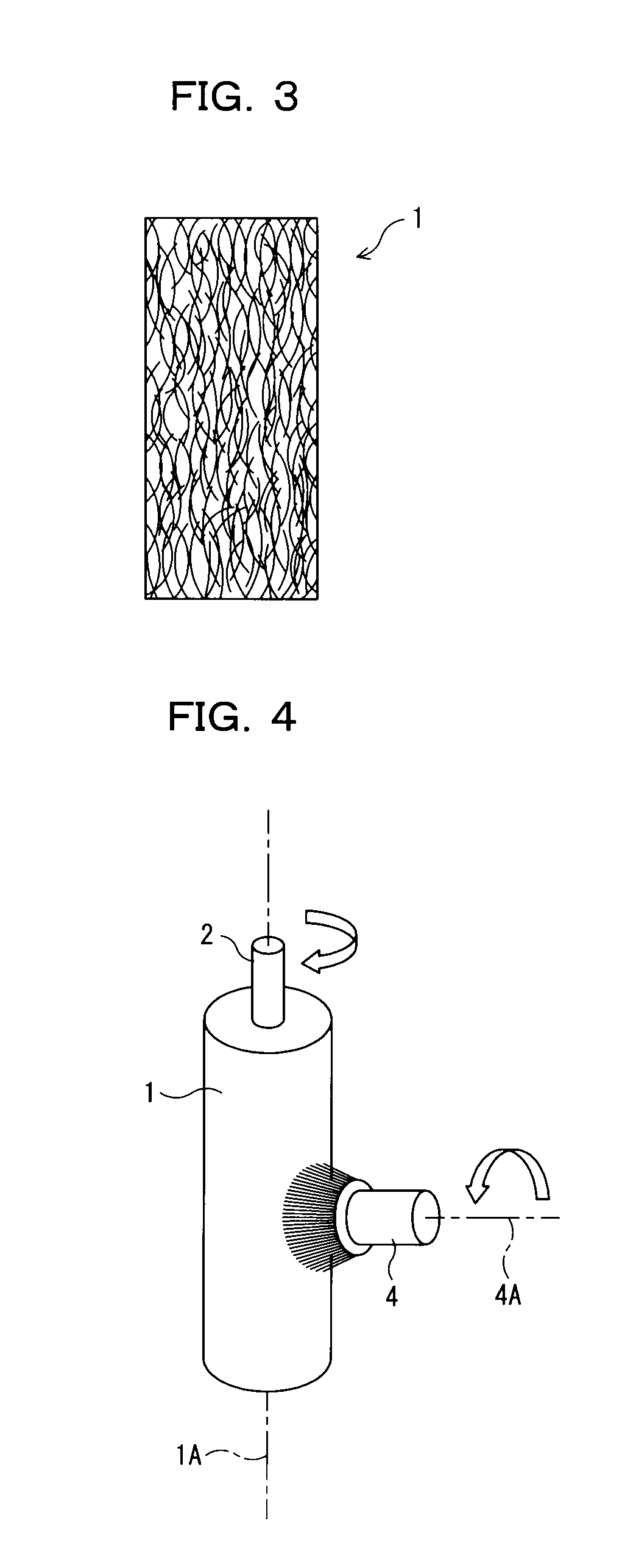Electrophotographic photosensitive body, method for producing conductive base, image forming device, and electrophotographic cartridge
a photosensitive body and electrophotography technology, applied in the direction of electrographic process equipment, optics, instruments, etc., can solve the problems of interference fringe, uneven image formation of photoreceptors, and various defects of photoreceptors, and achieve high performance
- Summary
- Abstract
- Description
- Claims
- Application Information
AI Technical Summary
Benefits of technology
Problems solved by technology
Method used
Image
Examples
example 1
[Substrate 1]
[0399]A substrate 1 made of an aluminum alloy A6063 defined in JIS H4040 and having an outer diameter of 30 mm, a length of 357 mm, and a thickness of 1.0 mm was prepared by cutting with a polycrystalline diamond bit such that the maximum height surface roughness Rz was 1.3 μm. Part of the substrate 1 was used for measurement of the in-plane arithmetic mean roughness Ra, the maximum height surface roughness Rz, and the kurtosis Rku of the substrate 1. Specifically, these values were measured according to JIS B0601:1994 with a surface roughness measuring instrument “Surfcom 480A”, manufactured by Tokyo Seimitsu Co., Ltd., and the obtained values were applied to the specification of JIS B0601:2001. The results are shown in Table 3.
[Coating Liquid for Undercoat Layer]
[0400]Surface-treated titanium oxide was prepared by mixing rutile titanium oxide having an average primary particle diameter of 40 nm (“TTO55N”, manufactured by Ishihara Sangyo Co., Ltd.) and methyldimethoxys...
example 2
[0408]A mirror-finished cut tube (Ra: 0.03, Rz: 0.2) (sic) of an aluminum alloy A6063 defined in JIS H4040 and having an outer diameter of 30 mm, a length of 357 mm, and a thickness of 1.0 mm was subjected to a roughening process using a brush composed of a cylindrical bed of PVC having an outer diameter of 60 mm and being provided with holes having a hole diameter of 5 mm in a zigzag array at 10-mm intervals and a nylon material (“Tynex A”, manufactured by Dupont), containing alumina abrasive grains having a diameter of 0.45 mm and a grain size #500 (average grain diameter: 34 μm), planted in the holes so as to have a length of 25 mm. The roughening was conducted by rotating the substrate at a rotational speed of 200 rpm and rotating the brush at a rotational speed of 750 rpm, with a contact width of 10 mm, a pulling-up speed of 5 mm / sec, and a sprinkling water volume of 1 L / min. The pulling-up speed was set as high as possible within the range that does not cause a low groove dens...
example 3
[0413]An ironed tube of an aluminum alloy A3003 defined in JIS H4040 and having an outer diameter of 30 mm, a length of 357 mm, and a thickness of 1.0 mm was subjected to a roughening process as in Example 2 to obtain a substrate 3.
[0414]A part of the resulting substrate 3 was put aside for measurement of the surface roughness and the groove width. The remaining washed substrate 3 was provided with a photosensitive layer as in Example 1 to give a photoreceptor P3.
[0415]An image was formed using the resulting photoreceptor P3 as in Example 1 and was evaluated by visual inspection. The results are shown in Table 3.
[0416]The substrate 3 put aside was subjected to measurement of the in-plane arithmetic mean roughness Ra, the maximum height surface roughness Rz, and the kurtosis Rku as in Example 2. Furthermore, the maximum value (maximum lateral width) and the minimum value (minimum lateral width) of groove width L of the grooves formed on the surface of the substrate 3 were measured. T...
PUM
| Property | Measurement | Unit |
|---|---|---|
| particle diameter | aaaaa | aaaaa |
| particle diameter | aaaaa | aaaaa |
| weight ratio | aaaaa | aaaaa |
Abstract
Description
Claims
Application Information
 Login to View More
Login to View More - R&D
- Intellectual Property
- Life Sciences
- Materials
- Tech Scout
- Unparalleled Data Quality
- Higher Quality Content
- 60% Fewer Hallucinations
Browse by: Latest US Patents, China's latest patents, Technical Efficacy Thesaurus, Application Domain, Technology Topic, Popular Technical Reports.
© 2025 PatSnap. All rights reserved.Legal|Privacy policy|Modern Slavery Act Transparency Statement|Sitemap|About US| Contact US: help@patsnap.com



